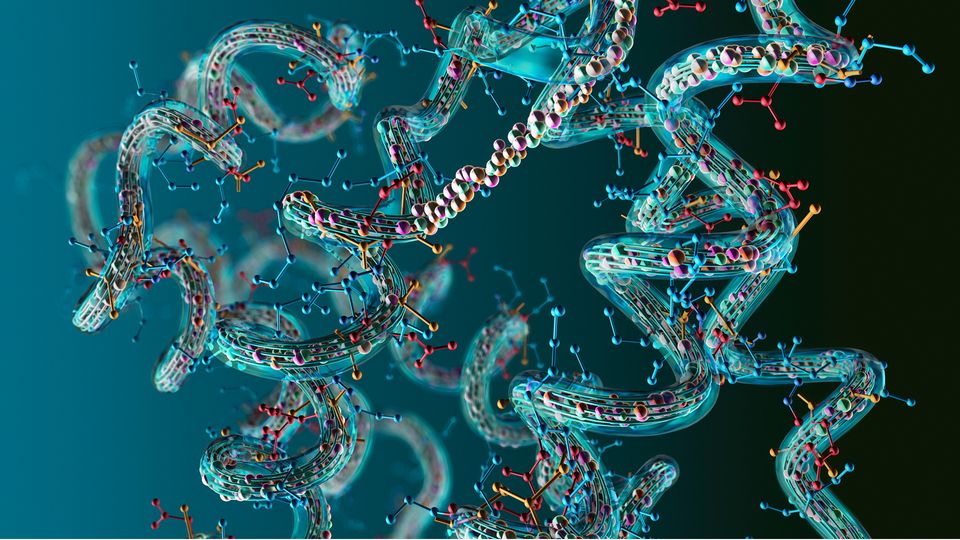Protein Purification Meets Automation: Driving Efficiency in Biopharma
Protein purification can be complex and time-consuming; automation can help increase efficiency and reduce errors.

Efficient and affordable protein purification is essential for developing next-generation drugs and vaccines. As biopharmaceuticals such as bispecific antibodies and cell and gene therapies continue to gain traction in clinical practice, the demand for scalable and rapid purification solutions continues to rise. Automation of purification workflows can increase efficiency, reduce errors and save hands-on time.
“One of the biggest hurdles with gene therapy is the fact that they're so expensive,” Dr. Chelsea Pratt, business segment marketing manager at Bio-Rad, previously told Technology Networks. “It goes back to what I think about in the 90s, whenever antibodies were first being produced and again were too expensive for treatment. But then we figured out a way to make them cheaper and faster, so we can get these drugs to market in a way that really impacts patient lives.”
Existing and emerging protein purification methods
Protein purification methodologies can vary drastically between different biotherapeutics, but typically these include centrifugation, precipitation methods, chromatographic techniques and/or ultrafiltration and dialysis. Typical workflows utilize several techniques, each tailored to isolate proteins based on specific properties such as size, charge or affinity.
The purification of monoclonal antibodies (mAbs) is relatively mature, and typically involves protein A chromatography, which leverages the specific binding affinity of a protein-based ligand (protein A) with the Fc region of antibodies.
While this method has proven successful for many mAb therapies, antibody aggregation has been found to reduce protein A binding capacity for bispecific antibodies. In addition, during the production process of bispecific antibodies, process-related by-products can arise due to the mismatching of heavy and light chains, which must be removed during purification. “What you really need is a different or novel way of purifying these [bispecific antibodies] based on very subtle differences in size and charge and hydrophobicity,” explained Pratt.
New ligand development and resin design are a major focus for improving protein purification processes. “I think the biggest innovation in this field has been the use of mixed-mode or multimodal chromatography to be able to just slightly tweak your purification based on a very subtle difference in size, charge or hydrophobicity,” said Pratt. “Ceramic hydroxyapatite has been around for over 20 years, which is a mixed-mode type of resin. But we're seeing more and more people pick up other types of resins that have ligands with hydrophobic areas and a charge as well. That gives them the power to be able to differentiate between the bispecific antibodies, and the very subtle differences that are in those by-products that are purified.”
One recent development is the creation of peptide ligands for purifying mAbs and viral vectors for gene therapy and vaccines. These ligands have the benefit of good binding selectivity but a moderate binding strength, enabling the recovery of the product under mild elution conditions.
Achieving scalability and reproducibility with automation
Integrating processes to enable continuous automated production remains one of the major challenges and opportunities in protein purification. Some progress has been made with the use of protein A membrane adsorbers, which can help move mAb processing from batch-based purification to semi-continuous purification.
“Whenever I think of automation and chromatography, I automatically go to continuous chromatography, and that's been a large advancement in being able to use or maximize the usage of the binding capacities of the resins,” Pratt said. “With continuous chromatography, it allows you to do continuous purification and maximize the use of the full length of the column. The issue that I see happening is the fact that regulatory agencies are used to batch purifications, and so working with them is kind of the biggest hurdle that's going to happen in the future.”
Pratt envisions automation and continuous chromatography also having an impact on the early discovery side of the drug development process, “Having simultaneous purifications happening where you're purifying more than one protein at one time, but on the small scale.”
Magnetic beads are increasingly incorporated into automated protein purification workflows. These beads can be coated with a specific ligand (e.g., protein A) that binds to a specific target protein or antibody and are easily separated from the solution when a magnetic field is applied. The protocol is often automated by combining it with a robotic liquid handling system.
The future of automation in protein purification
Driving lab automation is the progress made in collaborative robotics and workflow software, enabling labs to streamline more complex processes. However, before entirely automated purification workflows can become a reality, current lab infrastructures may need to adapt.
“Buildings and labs have been built for humans, where work is typically done on benches. To fully utilize robotic capabilities in a 24/7 operational environment, mobile robotics can be deployed to serve robotic workstations and bench-top instruments. However, current buildings often have pillars or other obstacles that aren’t ideal for end-to-end automation,” Dr. Hansjoerg Haas, senior director and general manager of laboratory automation at Thermo Fisher Scientific, previously told Technology Networks. Connecting workflows across multiple labs at different levels in a building poses additional challenges. “Mobile robotics doesn't like stairs! And so, this sometimes means major renovations within a lab, or some pharma companies talk even about the building of the future,” said Haas.
Beyond physical renovations to the lab, a digital transformation is also necessary to fully optimize existing workflows. “While there has been remote control and the ability to connect to high-end instruments via APIs (Application Programming Interfaces), this is not necessarily the case on the more normal equipment,” explained Haas. “And this is going back to the theory of everything digital – that people want to have every step, even the manual steps, being part of that [automated] workflow.”
Automation could improve the consistency and scale of purification workflows, “but we have to have the analysis to go along with that to make sure that it's safe and economical as well,” said Pratt. Artificial intelligence (AI) and machine learning (ML) could play a vital role in meeting the need for more efficient and trackable purification workflows.
“In the laboratory today, I think the capabilities of lab automation and the massive amount of datasets mean you need to think through the entire process of the sample coming into the laboratory to when you get your results,” Lars Kristiansen, vice president of product innovation and strategy at Molecular Devices, previously told Technology Networks. “In the past, scientists have been very focused on the scientific aspects of laboratory solutions. Going forward, there'll be much more integration between different technologies, different datasets and new AI and ML models that will also be in the sphere of the scientists.”
The above interviews were conducted at the Society for Laboratory Automation and Screening (SLAS) 2025 International Conference & Exhibition, which took place in San Diego, January 25–29.





